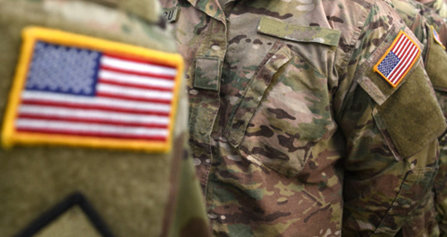Veteran Affairs Helped Fuel the Opioid Crisis

Recently, a veteran friend of mine, came over to visit—it was clear that something was “off” about the guy. I had come to know this Iraq War veteran through a local veteran’s organization in Tulsa, Oklahoma. He had mentioned to me his intention to seek help from the Department of Veteran Affairs Healthcare Clinic for his lower back pain. I thought they’d give him some type of physical therapy. Instead, they prescribed him hydrocodone, an opioid drug used to suppress pain, and sent him home. He was going through a nasty divorce and admitted “pill popping” was his new escape. Naturally, the cycle of addiction spiraled downward and ultimately resulted in him using street heroin. His mannerisms shifted into a drug personality and I made a point to intervene, ask questions, and demand a change.
Attempting to get clean, he tossed away his drugs and put himself under “house-arrest” on my couch and after three days I realized just why we have the opiate crisis. He was in pain (a lot of pain), and nothing I seemed to do would help. Finally, we contacted the Department of Veteran Affairs and got him admitted in to a treatment facility. I can’t stop thinking just how helpless the situation made me feel and how many other families and friends are going through the same experiences.
Using data provided under the Freedom of Information Act, the Center for Investigative Reporting said prescriptions for 4 opioids (hydrocodone, oxycodone, methadone and morphine) surged by 270% between 2000 and 2012, leading to addictions and a fatal overdose rate that was twice the national average. In 2014, the VA said it issued 1.7 million prescriptions for opioids to 443,000 vets to be taken at home. Citing a VA Office of Inspector General’s report, the Center for Ethics and the Rule of Law (CERL) said: “Between 2010 and 2015, the number of veterans addicted to opioids rose 55% to a total of roughly 68,000. This figure represents about 13% of all veterans currently prescribed opioids.”
Alarmed, the VA began cutting back its painkiller prescriptions in 2010. The agency says it reduced the number of vets receiving painkillers by 115,575 individuals between 2012 and 2015 and that it has 100,000 fewer vets on long-term opioid therapy. Still, the VA says it treated 66,000 vets for opioid addiction in the fiscal year 2016. “We owe it to the nation’s veterans to help them end their dependence on opioids,” said VA Secretary Robert McDonald, “and break the downward spiral that all too often leads to homelessness, prison, or suicide.”
Anyone who knows someone who is suffering from addiction should contact me—I’ve exchanged my couch for a real treatment program called Narconon Arrowhead, and it’s getting amazing results. Just today, I spoke with a former student’s mother and she raved about the program, saying she has two other family members who came to Narconon Arrowhead and they both came back home productive and with improved communication skills.
Call us and ask to speak with a treatment consultant—they’ll find someone to help you.


